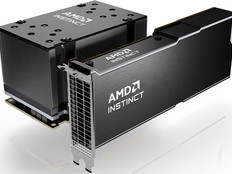Rise of the Gizmo
The global economic meltdown has coincided with one of those sweet periods of convergence in network-capable devices. As network-centric smartphones, such as the BlackBerry Storm or BlackJack II, grow increasingly feature-rich and network-ready, PC notebooks continue to shrink and a new hybrid species is emerging: the netbook.
A slim silver lining it may be, but 11.4 million netbook PCs shipped in 2008, and economic doom notwithstanding, industry estimates project 35 million unit sales in 2009. Why such strong projections in an otherwise dismal economy? Because the netbook brings us closer to an optimal combination of standard computer features in a convenient and portable package — what legendary industrial designer Raymond Loewy called the MAYA sweet spot: the Most Advanced Yet Acceptable implementation of a technology.
With netbooks, our PCs are approaching the sort of cheap ubiquity that fits firmly into science fiction author Bruce Sterling’s definition of Gizmo: “Highly unstable, user-alterable, baroquely multifeatured objects, Gizmos offer functionality so plentiful that it is cheaper to import features into the object than it is to simplify it. They are … linked to network service providers. They are not standalone objects, but interfaces.”
Here’s a first look at Hewlett-Packard’s gizmo-breeding line, the Mini 2140. What we are seeing with netbooks is the future of computing for a large segment of the wired masses. For these people, the primary computer application is the web browser. All these users require is a decent-sized screen, pervasive remote network access, and a robust and secure browser.
Advantages
According to Jason Davis, CDW’s HP brand manager, the Mini line was intended to be “a companion PC, not a primary computer, for an end user.” Released last spring, the product was originally targeted at the education market, “but we immediately got a lot of looks from corporate,” says Davis. To road warrior users of enterprise applications, the Mini 2140 will be appealing.
The keyboard is 90 percent full-size; after a few fits and starts, I was able to type pretty close to my usual rate. The display is bright and sharp with excellent diagonal viewing. Video playback is good and has a nice widescreen format. I watched the first episode of the final season of Battlestar Galactica with enjoyment on the Mini.
Sound is just adequate for a quiet room. Listening to music or video anywhere else requires headphones. With the built-in camera, I was able to fire up a Skype session in no time.
Why It Works For IT
With a capacious standard hard drive and the Microsoft Windows XP Professional SP2 install, it’s easy to see why the Mini 2140 is well suited for workers on the go. With 2 gigabytes of RAM it can certainly run full versions of any Windows app.
The Mini 2140 comes with two battery packs, which users will appreciate: a conformal three-cell Lithium-ion battery and a six-cell battery. When fully charged, the six-cell battery indicated seven and a quarter hours in the power manager. With two fully-charged battery packs, seven-plus hours of normal usage is realistic. I was able to keep the unit running from Friday afternoon to Sunday night, using it intermittently, viewing two full one-hour TV episodes and writing the bulk of this review on a single charge. It will certainly sustain any road warrior on a longish plane ride or passenger commute.
Overall, once the necessary tweaking is done, the Mini 2140 makes an excellent traveling companion for anyone who can’t be away from the Internet for more than 10 minutes.
Disadvantages
The 1024x576 screen resolution is a bit on the narrow side. I reviewed a test model; the production model should include a larger, 1366x768 resolution screen. Well-placed arrow and page up/down keys make viewing web pages a breeze.
When waking from sleep while on battery power, the unit occasionally emits a high-pitched whine. This occurs while running both Windows XP and the Ubuntu Netbook Remix OS. The noise comes and goes, and can be alleviated by a reboot or by plugging the Mini into AC power.
The track pad has buttons at the side, not in the traditional location at the bottom or top of the pad. This took some getting used to and caused a few stumbles when moving between the Mini and my regular notebook.
My main beef with the Mini is that there is no support for Linux planned at this time. But agency travelers typically access legacy Windows apps, so perhaps this is my own personal issue.







